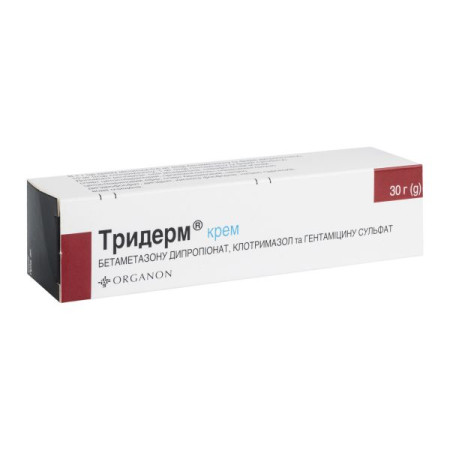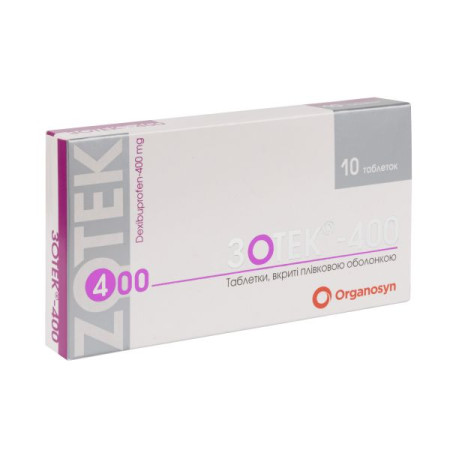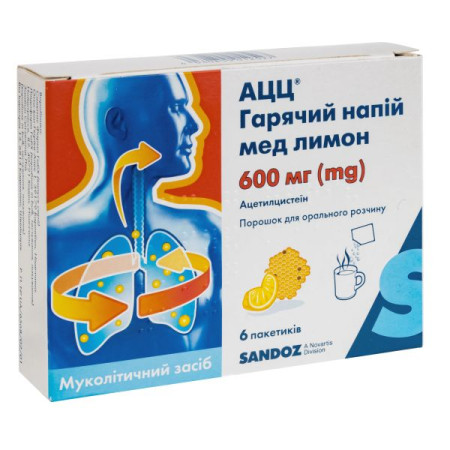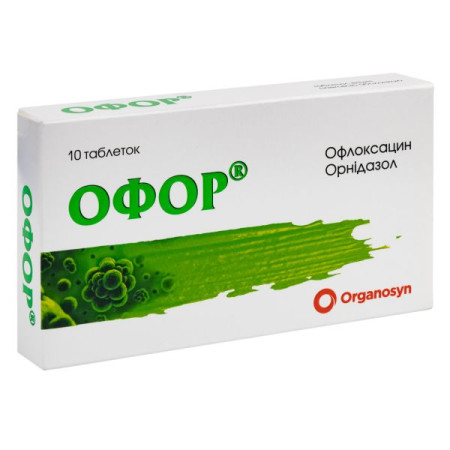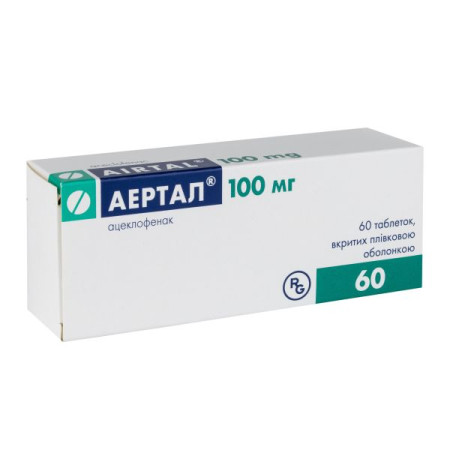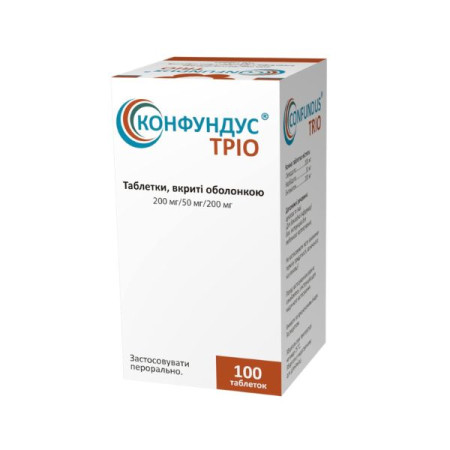Dropifem 30 film-coated tablets 3.03 mg blister No. 21

Instructions for use: Dropifem 30 film-coated tablets 3.03 mg blister No. 21
Composition
active ingredients: ethinylestradiol, drospirenone;
1 tablet contains: 0.03 mg of ethinylestradiol and 3 mg of drospirenone;
excipients: lactose monohydrate, corn starch, maltodextrin, magnesium stearate, Opadry 10A32290 yellow (hypromellose, talc, titanium dioxide (E 171), polysorbate 80, iron oxide yellow (E 172).
Dosage form
Film-coated tablets.
Main physicochemical properties: round tablets, film-coated, yellow in color, without coating defects.
Pharmacotherapeutic group
Sex gland hormones and drugs used in genital pathology. Hormonal contraceptives for systemic use.
Progestogens and estrogens, fixed combinations. Drospirenone and ethinylestradiol.
ATX code G03A A12.
Pharmacological properties
Pharmacodynamics.
Pearl contraceptive failure index for the drug: 0.09 (upper two-sided 95% confidence interval (CI): 0.32).
Overall Pearl Index (contraceptive failures + patient errors) for the drug: 0.57 (upper two-sided 95% confidence interval (CI): 0.90).
Drospirenone® 30 is a combined oral contraceptive containing ethinylestradiol and drospirenone. In therapeutic doses, drospirenone exhibits antiandrogenic and moderate antimineralocorticoid properties. It has no estrogenic, glucocorticoid, or antiglucocorticoid activity. Therefore, drospirenone has a similar pharmacological profile to natural progesterone.
The contraceptive effect of the drug is based on the interaction of various factors, the most important of which are the suppression of ovulation and changes in cervical secretion.
According to clinical studies, the moderate antimineralocorticoid properties of Drospifem® 30 result in a moderate antimineralocorticoid effect.
Pharmacokinetics.
Drospirenone
Absorption. When taken orally, drospirenone is rapidly and almost completely absorbed. The maximum serum concentration of 38 ng/ml is reached approximately 1-2 hours after a single dose. Bioavailability is 76-85%. Simultaneous food intake does not affect the bioavailability of drospirenone.
Distribution. After oral administration, serum drospirenone concentrations decline with a mean terminal half-life of approximately 31 hours. Drospirenone is bound to serum albumin but not to sex steroid binding globulin (SSGB) or corticoid binding globulin (CBG). Only 3-5% of the total serum concentration is present in the free state. The ethinylestradiol-induced increase in SSGB does not affect the binding of drospirenone to serum proteins. The mean volume of distribution of drospirenone is 3.7±1.2 l/kg.
Metabolism: Drospirenone is extensively metabolized after oral administration. The main metabolites in plasma are the acid form of drospirenone, which is formed by opening of the lactone ring, and 4,5-dihydro-drospirenone-3-sulfate, which is formed by hydration with subsequent sulfation. Drospirenone is also subject to oxidative metabolism catalyzed by CYP3A4. In vitro, drospirenone may weakly or moderately inhibit the cytochrome P450 enzymes: CYP1A1, CYP2C9, CYP2C19 and CYP3A4.
Elimination. The metabolic clearance rate of drospirenone from serum is approximately 1.5±0.2 ml/min/kg. Only a small amount of drospirenone is excreted unchanged. Metabolites are excreted in urine and feces in a ratio of 1.2:1.4; the half-life of metabolites is approximately 40 hours.
Steady state. During the application cycle, the maximum steady-state concentration of drospirenone in serum (approximately 70 ng/ml) is reached after 8 days of administration. Drospirenone levels in the blood increased 3-fold as a result of the ratio of the terminal half-life and the dosing interval.
Certain categories of patients:
with impaired liver function: in a single-dose study, the oral clearance of drospirenone was reduced by approximately 50% in subjects with moderate hepatic impairment compared with volunteers with normal hepatic function. The observed deviation in clearance did not cause any difference in blood potassium concentrations between the two groups of volunteers. Even in the presence of diabetes mellitus and concomitant therapy with spironolactone (two factors that can provoke hyperkalemia), no increase in serum potassium concentrations above the upper limit of normal was observed. It can be concluded that drospirenone is well tolerated in subjects with mild to moderate hepatic impairment (Child-Pugh class B).
Ethinylestradiol
Absorption: Ethinylestradiol is rapidly and completely absorbed after oral administration. After administration of 30 mcg, peak serum concentrations of 100 pg/ml are reached within 1-2 hours. Ethinylestradiol is subject to extensive first-pass metabolism, which varies between individuals.
Absolute bioavailability is about 45%.
Distribution. The expected volume of distribution of ethinylestradiol is approximately 5 l/kg and plasma protein binding is approximately 98%. Ethinylestradiol induces hepatic synthesis of GH and corticosteroid-binding globulin. With 30 μg of ethinylestradiol, plasma GH concentrations increase from 70 to approximately 350 nmol/l.
Ethinylestradiol passes into breast milk in small amounts (0.02% of the dose).
Metabolism: Ethinylestradiol is extensively metabolized in the gastrointestinal tract and during the first pass through the liver. This occurs mainly by hydroxylation of the aromatic ring with the formation of a wide range of hydroxylated and methylated metabolites, which are present in the free state and as conjugates with glucuronides and sulfates. The metabolic clearance of ethinylestradiol is about 5 ml/min/kg.
In vitro, ethinylestradiol is a reversible inhibitor of CYP2C19, CYP1A1 and CYP1A2, and an inhibitor of CYP3A4/5, CYP2C8 and CYP2J2.
Excretion. Ethinylestradiol is practically not excreted unchanged. Ethinylestradiol metabolites are excreted in urine and bile in a ratio of 4:6. The half-life of metabolites is almost 1 day. The half-life of metabolites is 20 hours.
Steady state. Steady state is reached in the second half of the dosing cycle, when the serum level of ethinylestradiol increases 1.4-2.1 times.
Ethnicity
No clinically significant differences in the pharmacokinetics of drospirenone or ethinyl estradiol were observed between Japanese and Caucasian women.
Preclinical safety data.
In laboratory animals, the effects of drospirenone and ethinylestradiol were limited to those associated with the known pharmacological action. In particular, reproductive toxicity studies in animals showed species-specific embryotoxic and fetotoxic effects. At exposures exceeding those observed in users of Drospirenone® 30, effects on sexual differentiation were observed in some animal species.
Indication
Oral contraception.
The decision to prescribe Drosophila 30 should take into account the individual patient's existing risk factors, in particular those for venous thromboembolism (VTE). The risk of VTE with Drosophila 30 should also be compared with that with other combined hormonal contraceptives (CHCs) (for more information, see sections 4.3 and 4.4).
Contraindication
CHCs should not be used if any of the following conditions are present. If any of these conditions appear for the first time during CHC use, the drug should be discontinued immediately.
Presence or risk of venous thromboembolism (VTE):
o venous thromboembolism at present, in particular due to anticoagulant therapy, or in history (e.g. deep vein thrombosis (DVT) or pulmonary embolism (PE));
o hereditary or acquired predisposition to venous thromboembolism, in particular resistance to activated protein C (including factor V Leiden mutation), antithrombin-III deficiency, protein C deficiency, protein S deficiency;
o major surgical interventions with prolonged immobilization (see section "Peculiarities of use");
o high risk of venous thromboembolism due to the presence of multiple risk factors (see section "Special warnings and precautions for use").
Presence or risk of arterial thromboembolism (ATE):
o the presence of arterial thromboembolism at present or in history (e.g. myocardial infarction) or the presence of prodromal symptoms (e.g. angina);
o current or history of cerebrovascular disease, presence of prodromal symptoms (e.g. transient ischemic attack (TIA));
o hereditary or acquired predisposition to arterial thromboembolism, in particular hyperhomocysteinemia and antibodies to phospholipids (anti-cardiolipin antibodies, lupus anticoagulant);
o migraine with focal neurological symptoms in history;
o high risk of arterial thromboembolism due to the presence of multiple risk factors (see section "Special warnings and precautions for use") or due to the presence of one serious risk factor, such as:
severe arterial hypertension;
severe dyslipoproteinemia.
Current or history of severe liver disease until liver function tests return to normal.
Severe renal failure or acute renal failure.
Presence of liver tumors at present or in history (benign or malignant).
Current or history of breast cancer, which may be hormone-sensitive (see section “Special warnings and precautions for use”, subsection “Tumors”).
Vaginal bleeding of unknown etiology.
Concomitant use with medicinal products containing ombitasvir/paritaprevir/ritonavir and dasabuvir, with medicinal products containing glecaprevir/pibrentasvir or sofosbuvir/velpatasvir/voxilaprevir (see section “Interaction with other medicinal products and other types of interactions”).
Hypersensitivity to the active substances or to any of the components of the drug.
Interaction with other medicinal products and other types of interactions
In the presence of any of the conditions or risk factors listed below, the appropriateness of using the drug Drospifem® 30 should be discussed with the patient.
Effect of other drugs on Drospifem® 30
Interactions are possible with drugs that induce microsomal enzymes. This may lead to increased clearance of sex hormones, which in turn may cause breakthrough bleeding and/or loss of contraceptive efficacy.
Therapy
Enzyme induction can be detected after a few days of treatment. Maximum enzyme induction is generally observed after a few weeks. After discontinuation of treatment, enzyme induction may persist for about 4 weeks.
Short-term treatment
Women taking enzyme-inducing drugs should temporarily use a barrier method or another method of contraception in addition to the combined oral contraceptive (COC). The barrier method should be used throughout the duration of concomitant therapy and for 28 days after its discontinuation.
If concomitant therapy is continued after the last COC tablets in the pack have been taken, the next COC pack should be started immediately after the previous pack without the usual tablet-free interval.
Long-term treatment
Women on long-term therapy with active substances that induce liver enzymes are recommended to use a barrier or other reliable non-hormonal method of contraception.
The following interactions have been reported based on published data:
Active substances that increase COC clearance (reduced COC efficacy due to enzyme induction), for example:
barbiturates, bosentan, carbamazepine, phenytoin, primidone, rifampicin; medicines used for HIV infection: ritonavir, nevirapine and efavirenz; also possibly felbamate, griseofulvin, oxcarbazepine, topiramate and herbal medicines containing St. John's wort extract (Hypericum perforatum).
Active substances with an inconsistent effect on COC clearance:
When used concomitantly with COCs, a large number of combinations of HIV protease inhibitors and non-nucleoside reverse transcriptase inhibitors, including combinations with hepatitis C virus (HCV) inhibitors, may increase or decrease plasma concentrations of estrogen or progestins. The cumulative effect of such changes may be clinically significant in some cases.
Therefore, the prescribing information for the concomitant HIV/HCV medicinal product should be consulted for potential interactions and any other recommendations. In case of any doubt, women should additionally use a barrier method of contraception during treatment with protease inhibitors or non-nucleoside reverse transcriptase inhibitors.
Active substances that reduce COC clearance (enzyme inhibitors)
The clinical significance of the potential interaction with enzyme inhibitors remains unclear.
Concomitant use of strong CYP3A4 inhibitors may increase plasma concentrations of estrogen or progestin, or both.
In a multiple-dose study of the combination drospirenone (3 mg/day)/ethinyl estradiol (0.02 mg/day) with concomitant use of the strong CYP3A4 inhibitor ketoconazole for 10 days, the AUC(0-24h) of drospirenone and ethinyl estradiol increased 2.7- and 1.4-fold, respectively.
Co-administration of etoricoxib at doses of 60 to 120 mg/day with a combined hormonal contraceptive containing 0.035 mg of ethinyl estradiol resulted in a 1.4- to 1.6-fold increase in plasma concentrations of ethinyl estradiol, respectively.
Effects on other drugs. Oral contraceptives may affect the metabolism of other drugs. They may alter the concentration of active substances in plasma and tissues: increase (such as cyclosporine) and decrease (such as lamotrigine).
Based on known in vivo inhibition and interaction studies conducted in female volunteers taking omeprazole, simvastatin and midazolam as indicator substrates, the effect of drospirenone at a dose of 3 mg on other medicinal products metabolised by cytochrome P450 is unlikely.
Other forms of interaction: In patients with renal insufficiency, the simultaneous use of drospirenone and ACE inhibitors or non-steroidal anti-inflammatory drugs does not have a significant effect on serum potassium levels. In this case, it is necessary to study the serum potassium level during the first cycle of taking the drug (see also the section "Special instructions").
Laboratory tests
The use of COCs may affect the results of some laboratory tests, such as biochemical parameters of liver, thyroid, adrenal and renal function, plasma concentrations of transport proteins such as corticoid-binding globulin, plasma concentrations of lipid/lipoprotein fractions, and parameters of carbohydrate metabolism, coagulation and fibrinolysis. These changes are usually within normal limits. Drospirenone increases plasma renin and aldosterone activity, which is induced by its moderate antimineralocorticoid activity.
Pharmacodynamic interactions
In clinical trials in patients treated for hepatitis C (HCV) infection with the medicinal products containing ombitasvir/paritaprevir/ritonavir and dasabuvir with or without ribavirin, significant elevations of transaminases (ALT) exceeding 5 times the upper limit of normal (ULN) occurred more frequently in women using ethinylestradiol-containing medicinal products such as combined hormonal contraceptives (CHCs). In addition, elevations of ALT have also been observed with the antiviral medicinal products containing glecaprevir/pibrentasvir or sofosbuvir/velpatasvir/voxilaprevir in women using ethinylestradiol-containing medicinal products such as CHCs (see sections 4.3 and 4.4). Therefore, patients taking Drospirenone 30 should switch to an alternative method of contraception (e.g. progestogen-only contraception or non-hormonal methods of contraception) before starting treatment with these combination drug regimens. Treatment with Drospirenone 30 can be resumed 2 weeks after the end of treatment with these combination drug regimens.
Application features
If any of the conditions/risk factors listed below are present, the potential risk and expected benefit of COC use should be carefully weighed in each individual case. If any of the conditions or risk factors listed below worsen, or if they occur, it is recommended that you consult your doctor, who may decide to discontinue the drug.
In case of suspected or confirmed VTE or ATE, the drug should be discontinued. If anticoagulant therapy is initiated, alternative adequate contraception should be provided due to the teratogenic effects of anticoagulants (coumarins).
Circulatory disorders
The incidence of venous and arterial thrombotic and thromboembolic diseases in women without risk factors who used COCs with low estrogen doses (less than 50 μg ethinylestradiol), such as Drospirenone® 30, is 20 to 40 cases per 100,000 women per year, but this risk varies depending on the level of progestogen. For comparison: in women who do not use contraceptives, the incidence of these diseases is 5 to 10 cases per 100,000.
Risk of developing venous thromboembolism (VTE)
The use of any CHC increases the risk of venous thromboembolism (VTE) in women who use it compared with those who do not use it. Medicines containing levonorgestrel, norgestimate or norethisterone are associated with a lower risk of VTE. The use of other medicines, such as Drospirenone, may lead to a twofold increase in risk. The decision to use medicines other than those with the lowest risk of VTE should only be made after discussion with the woman. It is necessary to ensure that she is aware of the risk of VTE associated with the use of Drospirenone, the extent of the influence of her existing risk factors and the fact that the risk of VTE is highest during the first year of use. According to some data, the risk of VTE may increase when resuming CHC use after a break of 4 weeks or more.
The risk of developing venous thromboembolic complications in women using CHCs may be significantly higher in the presence of additional risk factors, especially multiple ones (see table).
Drospirenone 30 is contraindicated in women with a combination of risk factors that put them at very high risk of venous thrombosis (see section 4.3). If a woman has more than one risk factor, the increased risk may be greater than the sum of the risks associated with each individual factor, so the overall risk of VTE should be considered. If the benefit/risk ratio is considered negative, CHCs should not be used (see section 4.3).
About 2 in 10,000 women who are not using CHCs and are not pregnant will develop a VTE during the 1-year follow-up period. However, the risk for any individual woman may be much higher, depending on risk factors (see below).
This compares with a rate of 6 in women using levonorgestrel-containing CHCs. On average, 5-7 cases per 10,000 woman-years based on the calculation of the relative risk of using levonorgestrel-containing CHCs compared to that in women not using CHCs (about 2.3-3.6 cases).
In both cases, the number of VTE events per year was lower than would normally be expected during pregnancy or the postpartum period.
VTE is fatal in 1-2% of cases. The additional risk of VTE is highest during the first year of combined oral contraceptive use.
Number of VTE cases per 10,000 women in 1 year
Risk factors for developing VTE
The risk of developing venous thromboembolic complications in women using CHCs may be significantly higher in the presence of additional risk factors, especially multiple ones (see table).
The use of the drug Drospifem® 30 is contraindicated in women with multiple risk factors that may increase the risk of developing venous thrombosis (see section "Contraindications"). If a woman has more than one risk factor, the increased risk may be greater than the sum of the risks associated with each individual factor, so the overall risk of developing VTE should be taken into account. If the benefit/risk ratio is unfavorable, CHCs should not be prescribed (see section "Contraindications").
Risk factors for developing VTE
| Risk factor | Note |
Obesity (body mass index exceeds 30 kg/m2). | The risk increases significantly with increasing body mass index. It especially requires attention in the presence of other risk factors. |
Prolonged immobilization, major surgery, surgery on the lower extremities or pelvic organs, neurosurgery, or major trauma. Note: Temporary immobilization, including flights > 4 hours, may also be a risk factor for VTE, especially in women with other risk factors. | It is recommended to discontinue use of the drug (in the case of elective surgery at least 4 weeks in advance) and not resume use earlier than 2 weeks after full recovery of motor activity. In order to avoid unwanted pregnancy, other methods of contraception should be used. Antithrombotic therapy should be considered if the drug has not been discontinued beforehand. |
| Family history (venous thromboembolism in a relative or parent, especially at a relatively young age, for example under 50 years of age). | In case of hereditary predisposition, women are advised to consult a specialist before using any CHC. |
| Other conditions associated with VTE. | Cancer, systemic lupus erythematosus, hemolytic uremic syndrome, chronic inflammatory bowel disease (Crohn's disease or ulcerative colitis), and sickle cell anemia. |
| Age. | Especially over the age of 35. |
There is no consensus on the possible impact of varicose veins and superficial thrombophlebitis on the development and progression of venous thrombosis.
Attention should be paid to the increased risk of thromboembolism during pregnancy, especially during the 6 weeks after delivery (for information on pregnancy or breastfeeding, see section "Use during pregnancy or breastfeeding").
Symptoms of VTE (deep vein thrombosis and pulmonary embolism)
Women should be advised to contact their doctor immediately if they experience the following symptoms and to inform them that they are using CHCs.
Symptoms of deep vein thrombosis (DVT) may include:
unilateral swelling of the leg and/or foot or areas along a vein on the leg;
pain or increased sensitivity in the leg that may only be felt when standing or walking;
a feeling of heat in the affected leg; redness or discoloration of the skin on the leg.
Symptoms of pulmonary embolism (PE) may include:
sudden shortness of breath of unknown etiology or rapid breathing;
sudden cough, which may be accompanied by hemoptysis;
sharp chest pain;
severe dizziness or vertigo;
fast or irregular heartbeat.
Some of the above symptoms (e.g., shortness of breath, cough) are nonspecific and may be misinterpreted as manifestations of more common and less severe conditions (e.g., respiratory infection).
Other signs of vascular occlusion may include: sudden pain in the limb, swelling, acute abdomen, and slight cyanosis of the skin of the extremities.
If the occlusion develops in the retinal veins, symptoms can range from painless blurred vision that can progress to vision loss. Sometimes, vision loss develops almost instantly.
Risk of arterial thromboembolism (ATE).
Epidemiological studies have associated the use of CHCs with an increased risk of arterial thromboembolic events (myocardial infarction) or cerebrovascular accidents (e.g. transient ischemic attacks, stroke). Cases of arterial thromboembolism can be fatal.
The risk of arterial thromboembolic complications or cerebrovascular accidents with CHC use is increased in women with existing risk factors (see table). Drospirenone is contraindicated in women with one serious or a combination of several risk factors for ATE that put them at very high risk of arterial thrombosis (see section "Contraindications"). If a woman has more than one risk factor, the increased risk may be greater than the sum of the risks associated with each individual factor, so the overall risk should be considered. If the benefit/risk ratio is unfavorable, CHCs should not be prescribed (see section "Contraindications").
Risk factors for developing ATE
| Risk factor | Note |
| Age. | Especially over the age of 35. |
| Smoking. | Women using CHCs are advised to abstain from smoking. Women over 35 who continue to smoke are strongly advised to use another method of contraception. |
| Arterial hypertension | |
| Obesity (body mass index exceeds 30 kg/m2). | The risk increases significantly with increasing body mass index. This is especially important if women have other risk factors. |
| Family history (arterial thromboembolism in a relative or parent, especially at a relatively young age, for example under 50 years of age). | In case of hereditary predisposition, women are advised to consult a specialist before using any CHC. |
| Migraine. | An increase in the frequency or severity of migraine during CHC use (possible prodromal states before the development of cerebrovascular events) may require immediate discontinuation of CHC use. |
| Other conditions associated with adverse vascular reactions. | Diabetes mellitus, hyperhomocysteinemia, heart valve defects, atrial fibrillation, dyslipoproteinemia, and systemic lupus erythematosus. |
Extremely rare cases of thrombosis of other blood vessels, such as arteries and veins of the liver, kidneys, mesenteric vessels, cerebral vessels or retina, have been reported in women using combined contraceptives, but their relationship to COC use has not been proven.
Symptoms of ATE
Women should be advised to contact their doctor immediately if they experience the following symptoms and to inform them that they are using CHCs.
Symptoms of cerebral circulation disorders may include:
sudden facial numbness, weakness or numbness of the limbs, especially on one side;
sudden trouble walking, dizziness, loss of balance or coordination;
sudden confusion, impaired speech or understanding;
sudden vision loss in one or both eyes;
sudden, severe, or prolonged headache with no known cause;
loss of consciousness or fainting with or without seizures.
The temporary nature of the symptoms may indicate a transient ischemic attack (TIA).
Symptoms of myocardial infarction (MI) may include:
pain, discomfort, feeling of compression, heaviness, feeling of fullness in the chest, arm or behind the sternum;
a feeling of discomfort radiating to the back, jaw, throat, arm, stomach;
feeling of fullness in the stomach, indigestion or heartburn;
increased sweating, nausea, vomiting, or dizziness;
severe weakness, anxiety, or shortness of breath;
fast or irregular heartbeat.
Tumors
The results of some epidemiological studies indicate an additional increase in the risk of developing cervical cancer with long-term (more than 5 years) use of COCs, but this statement is still controversial, since it is not yet clear to what extent the results of the studies take into account concomitant risk factors, such as cervical smears and sexual behavior, and other factors, such as human papillomavirus.
Breast cancer: Drospirenone/ethinylestradiol is contraindicated in women with current or past breast cancer, as breast cancer may be hormone-sensitive (see Contraindications).
Epidemiological studies have not found a consistent association between the use of combined oral contraceptives (COCs) and the risk of breast cancer. The results of the studies do not show an association between current or past use of COCs and the risk of breast cancer. However, some studies have reported a slightly increased risk of breast cancer among current or recent users (< 6 months since last use) and long-term users of COCs (see section “Adverse reactions”, subsection “Post-marketing data”).
Since breast cancer is rare in women under 40 years of age, the increase in the number of cases of breast cancer diagnosed in women who use or have recently used COCs is small in relation to the overall risk of breast cancer. The results of the studies do not prove a cause-and-effect relationship. The increased risk may be due to earlier diagnosis of breast cancer in women who use COCs, to the biological action of COCs, or to a combination of both. There is a tendency for breast cancer detected in women who have ever used COCs to be clinically less severe than in those who have never used COCs.
In isolated cases, benign and even more rarely malignant liver tumors have been observed in women using COCs. In some cases, these tumors have caused life-threatening intra-abdominal bleeding. In the event of complaints of severe epigastric pain, liver enlargement or signs of intra-abdominal bleeding, the possibility of a liver tumor in women using COCs should be considered in the differential diagnosis.
The risk of endometrial and ovarian cancer is reduced with higher doses of COCs (50 μg ethinylestradiol). The hypothesis that similar trends may apply to low-dose COCs remains to be confirmed.
Other states
In patients with renal insufficiency, the ability to excrete potassium may be reduced. It is known that drospirenone does not affect the serum potassium concentration in patients with mild to moderate renal insufficiency. The development of hyperkalemia is theoretically possible only in those patients with renal insufficiency whose serum potassium concentration before treatment was in the upper limits of the control range and who are additionally taking potassium-sparing drugs. In such patients, it is recommended to check the serum potassium level during the first cycle of treatment, especially when potassium-sparing drugs are used simultaneously (see also the section "Interaction with other medicinal products and other types of interactions").
Women with hypertriglyceridemia or a family history of this disorder are at risk of developing pancreatitis when using COCs.
Although a slight increase in blood pressure has been observed in many women taking COCs, clinically significant increases in blood pressure have been reported rarely. Only in rare cases is immediate discontinuation of COC use necessary. If, during the use of COCs in a woman with pre-existing hypertension, blood pressure values remain persistently elevated or if a significant increase in blood pressure does not respond adequately to antihypertensive therapy, COC use should be discontinued. If necessary, COC use may be continued if normal blood pressure values are achieved with antihypertensive therapy.
The following conditions have been reported to occur or worsen during pregnancy and COC use, but the relationship to COC use is not conclusive: jaundice and/or pruritus associated with cholestasis; gallstones; porphyria; systemic lupus erythematosus; haemolytic uraemic syndrome; Sydenham's chorea; herpes gestationis; hearing loss associated with otosclerosis.
Exogenous estrogens may induce or exacerbate symptoms of hereditary and acquired angioedema.
In acute or chronic liver dysfunction, it may be necessary to discontinue COC use until liver function tests return to normal. In the event of recurrence of cholestatic jaundice, which first occurred during pregnancy or during previous use of sex hormones, COC use should be discontinued.
Although COCs may affect peripheral insulin resistance and glucose tolerance, there is no evidence to suggest that a change in the therapeutic regimen is necessary for diabetic women taking low-dose COCs (containing ≤ 0.05 mg ethinylestradiol). However, diabetic women should be closely monitored throughout the duration of COC use.
Worsening of epilepsy, Crohn's disease, and ulcerative colitis has also been reported with COC use.
Mood swings and depression are well-known side effects of hormonal contraceptives (see section 4.8). Depression can be serious and
There are no reviews for this product.
There are no reviews for this product, be the first to leave your review.
No questions about this product, be the first and ask your question.





